As a dedicated editor of a Saab enthusiasts’ blog, I’ve come to appreciate the unique character and engineering brilliance of Saab vehicles. Every model, from the classic 900 to the sleek 9-5ng, has a story, and it’s our responsibility as owners to maintain these stories on the road.
In this comprehensive guide, I’m sharing a maintenance roadmap that’s been a part of my journey with Saab, tailored for both miles and kilometers. Remember, the key to keeping your Saab in prime condition depends not just on following a schedule but also on adapting to the specific conditions and demands you place on your vehicle.
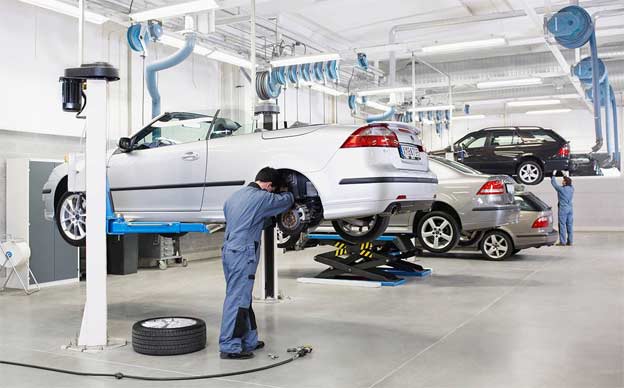
Table of Contents
- 1 Saab Maintenance: Balancing Miles and Kilometers with Vehicle Demands
- 1.1 Regular Service Intervals: Every 3,000 to 7,000 Miles (4,828 to 11,265 Kilometers)
- 1.2 Mid-Range Maintenance: Every 15,000 to 30,000 Miles (24,140 to 48,280 Kilometers)
- 1.3 In-Depth Inspections: Every 35,000 to 50,000 Miles (56,327 to 80,467 Kilometers)
- 1.4 Major Service Check: Every 60,000 Miles (96,561 Kilometers)
- 1.5 Automatic Transmission Fluid Change: Every 60,000 Kilometers
- 2 DIY Tips for the Saab Enthusiast
- 3 A Personal Commitment to Saab Excellence
Saab Maintenance: Balancing Miles and Kilometers with Vehicle Demands
Regular Service Intervals: Every 3,000 to 7,000 Miles (4,828 to 11,265 Kilometers)
Oil and filter changes are the lifelines for your Saab. Depending on your driving style and the demands you put on your vehicle, these should be done every 3,000 to 7,000 miles (4,828 to 11,265 kilometers). Whether you’re cruising in a vintage model or powering through in a modern one, this is non-negotiable for engine health.
Mid-Range Maintenance: Every 15,000 to 30,000 Miles (24,140 to 48,280 Kilometers)
At 15,000 miles (24,140 kilometers), it’s time to change the air filter, which is vital for your Saab’s breathing. Inspecting the battery and coolant at 20,000 miles (32,187 kilometers) can save you from unexpected troubles. And don’t forget the fuel filter at 25,000 miles (40,234 kilometers). These intervals are crucial for keeping your Saab’s heart beating strong.
In-Depth Inspections: Every 35,000 to 50,000 Miles (56,327 to 80,467 Kilometers)
Your Saab asks for a little more attention during these miles. Checking and possibly replacing the battery at 35,000 miles (56,327 kilometers), changing spark plugs and wires at 40,000 miles (64,374 kilometers), and inspecting the ignition system and suspension are all part of the drill. These checks, repeated at 45,000 miles (72,420 kilometers) and 50,000 miles (80,467 kilometers), are like regular health check-ups for your vehicle.
Major Service Check: Every 60,000 Miles (96,561 Kilometers)
This is the big one. At 60,000 miles (96,561 kilometers), your Saab will need an overhaul – brake pads, fluids, radiator hoses, coolant, power steering fluid, timing belt, and air filter. It’s also time for a comprehensive system check – engine, transmission, cooling, braking, and suspension. Think of it as a complete physical for your car.
Automatic Transmission Fluid Change: Every 60,000 Kilometers
For Saab models with automatic transmissions, it’s crucial to replace the transmission fluid every 60,000 kilometers. This often-overlooked maintenance task ensures smooth gear shifts and prolongs the life of the transmission. Regular transmission fluid changes can prevent costly repairs down the road.
DIY Tips for the Saab Enthusiast
Brakes: The Sound of Safety
Listen for any unusual sounds. A squeak or a screech usually means it’s time for new brake pads and discs. This is something you can feel and hear, so stay alert.

Tuning into Your Saab’s Safety Signals
The braking system is one of the most critical safety features of your Saab. It’s not just about being able to stop; it’s about controlling your vehicle effectively in every driving situation. One of the key indicators of brake health is the sounds they make. Unusual noises from your brakes are not just irritants; they are often the first sign that something needs attention.
When you apply the brakes, listen carefully. A high-pitched squeak or a deeper screech can be alarming signs. These sounds typically indicate that your brake pads have worn down and need replacing. Brake pads are the components that apply pressure and create friction with the brake rotors, allowing your car to slow down and stop. When these pads wear out, their effectiveness in stopping your vehicle diminishes, which can be dangerous.
But it’s not just about what you hear; it’s also about what you feel. When brake pads wear out, you might notice a difference in how your car responds when you apply the brakes. There might be a longer delay in stopping, or you might feel a vibration or pulsing sensation through the brake pedal. These are all indications that your brakes require attention.
Regularly checking your brakes, listening to their sounds, and being attentive to how they feel when in use are crucial aspects of maintaining your Saab’s safety. If you notice any unusual sounds or sensations, it’s advisable to have your brakes inspected by a professional. They can determine whether it’s just the pads that need replacing or if there are more significant issues with the discs or the entire braking system.
In summary, the sounds and sensations of your brakes are not to be ignored. They are your early warning system for potential issues. Staying vigilant and responsive to these signs ensures that your Saab remains safe and reliable, giving you peace of mind on every journey. Remember, when it comes to brakes, it’s always better to be proactive than reactive.
Tires: Your Contact with the Road
Regular checks of the spare tire and overall tire pressure are essential. The coin trick for measuring tread depth is simple yet effective. Remember, your tires are what connect you to the road.
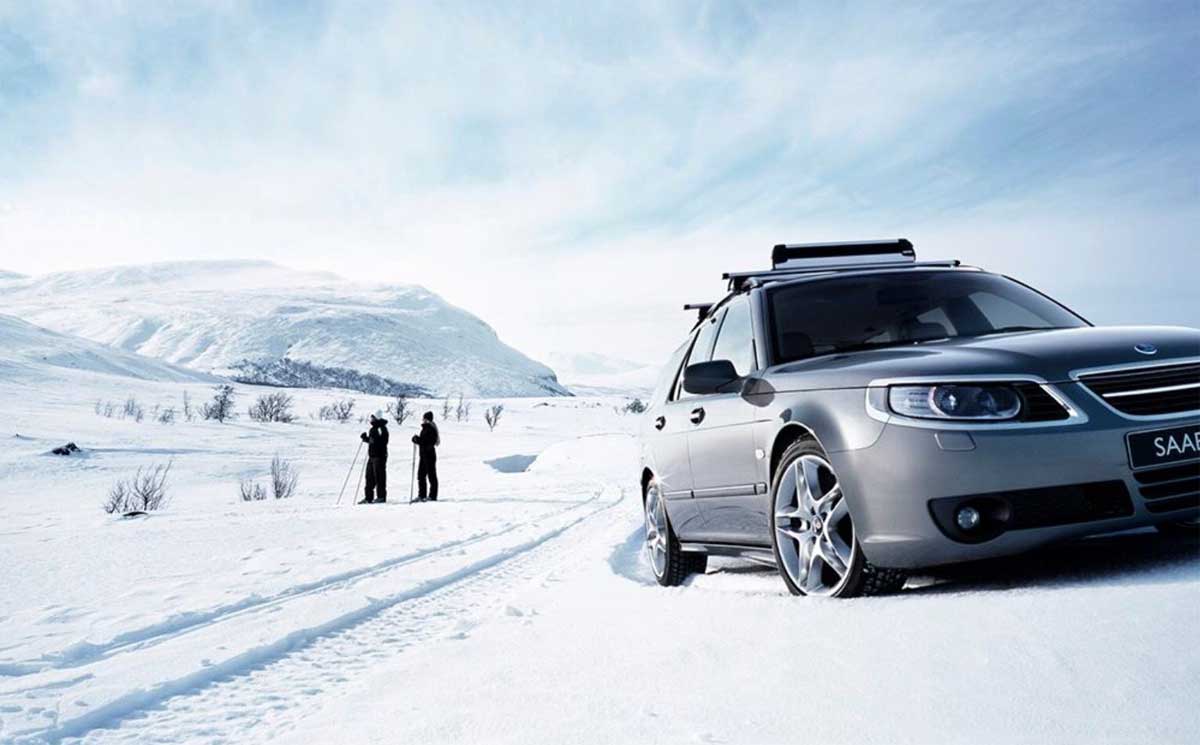
Tires: Your Critical Link to the Road
Tires are arguably one of the most crucial components of your vehicle, acting as the sole point of contact between your Saab and the road. Ensuring they are in top condition is not just a matter of maintenance; it’s a direct investment in your safety and driving experience. Regularly checking your tires, including the spare, should become a routine part of your vehicle care regimen.
Start by examining the overall condition of the tires. Look for any signs of wear and tear, such as cracks, bulges, or objects embedded in the tread. These can be early indicators of potential problems. The condition of your spare tire is equally important. Often overlooked, the spare tire needs to be ready for use at any time, as you never know when you might need it. Ensure it’s properly inflated and free from damage.
Tire pressure is another critical aspect that demands regular attention. Driving with incorrectly inflated tires can lead to a range of issues, from uneven wear to decreased fuel efficiency and even compromised handling. It’s recommended to check tire pressure monthly, including the spare. The correct tire pressure for your specific Saab model can be found in the owner’s manual or on a sticker inside the driver’s door.
Measuring tread depth is another simple yet vital check. The ‘coin trick’ is a quick and easy way to gauge whether your tires still have adequate tread. Insert a coin into the tread groove with the coin’s figure upside down. If you can see the top of the figure’s head, it’s time to consider replacing the tire. Adequate tread depth is crucial for maintaining good traction, especially in wet conditions.
Regular tire maintenance ensures that your vehicle remains safe, efficient, and enjoyable to drive. It’s not just about keeping your car on the road; it’s about ensuring that every journey in your Saab is as safe and comfortable as possible. By keeping a close eye on your tires’ condition, pressure, and tread depth, you’re not just maintaining your car; you’re taking an active step towards safer driving.
Lights: Your Eyes in the Dark
Functioning lights are non-negotiable for safety. This includes everything from brake lights to reverse lights. A quick check and a bulb change can make all the difference.
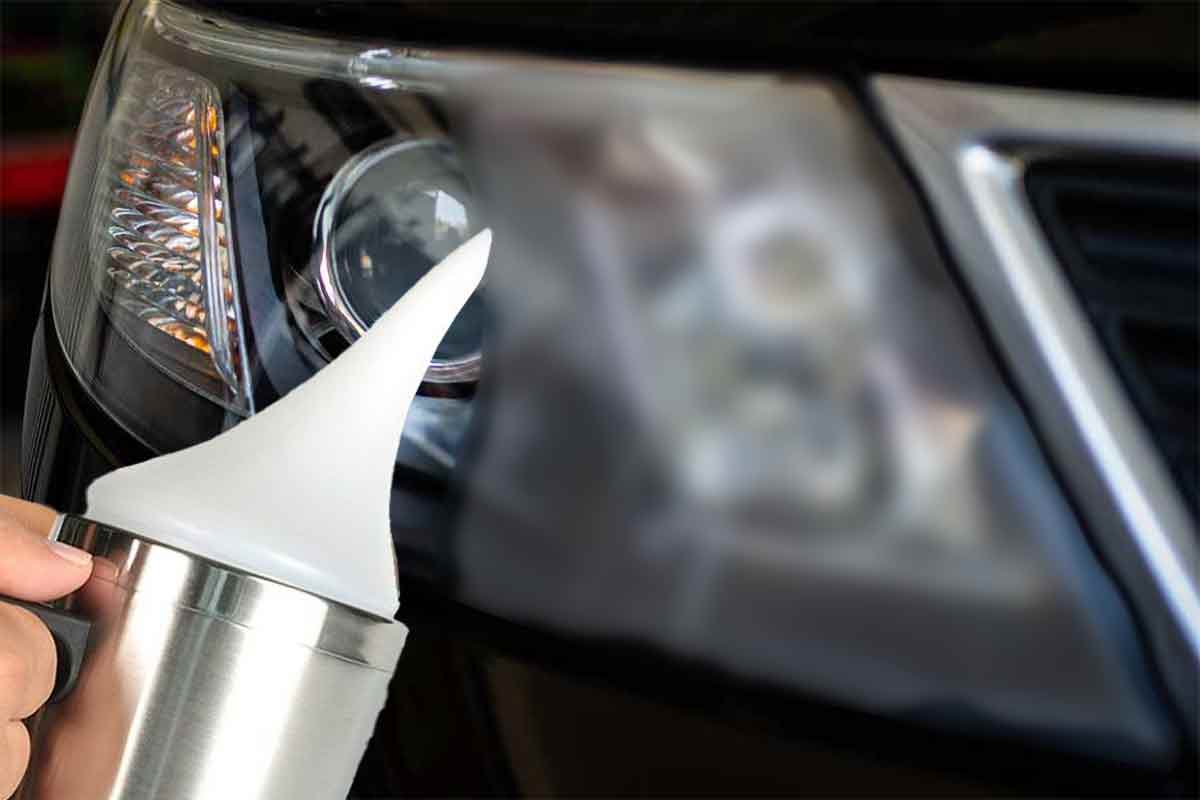
Ensuring Visibility and Safety
Regularly inspecting the headlights of your Saab is not just a maintenance routine; it’s a critical safety measure. Start by positioning your vehicle in a secure and well-lit area where you can easily access and observe all the lights. Begin with the headlights, checking both the low and high beams for functionality. It’s not uncommon for headlight bulbs to burn out, and fortunately, replacing them is usually a straightforward task that you can handle yourself. Your Saab’s owner’s manual will provide specific instructions on the procedure and the type of bulb required for your model. This manual is an invaluable resource, offering step-by-step guidance tailored to your specific Saab model.
However, the inspection should not stop at the headlights. Ensure to check all the lights around your vehicle, including brake lights, indicators, reverse lights, and the smaller lights above the registration plate. Each of these lights plays a vital role in your vehicle’s safety and communication with other road users. For instance, malfunctioning brake lights can lead to dangerous situations on the road, making it hard for drivers behind you to know when you’re slowing down or stopping.
Testing brake and reverse lights might require an extra set of hands. You can enlist the help of a friend to observe the lights while you operate them from inside the car. Alternatively, a simple yet effective method is to reverse close to a reflective surface, such as a window or garage door, where you can see the reflection of your lights. This way, you can quickly identify any lights that are not functioning and need replacement.
Keeping all the lights on your Saab in working order is a fundamental aspect of vehicle maintenance. Not only does it ensure your safety on the road, but it also keeps your vehicle compliant with road safety regulations. Regular checks and timely replacements of any faulty bulbs will enhance your visibility while driving, contributing to a safer driving experience for you and others on the road.
Wipers and Washers: Clearing Your View
Annually replacing your wiper blades is a small task with big benefits. A clear view is a safe view, so keep those blades fresh and the washer fluid topped up.

Oil and Coolant: Lifeblood of Your Saab
Regular checks of oil and coolant levels are crucial. These fluids are the lifeblood of your Saab, so keep them within the recommended range.
Motor Oil Inspection: A Vital Step in Saab Maintenance
One of the most fundamental aspects of keeping your Saab in top-notch condition is regularly checking the engine oil. This simple yet crucial task can be the difference between a smoothly running engine and costly repairs down the line. To start, open the hood of your Saab and locate the oil dipstick. This is usually marked and easily accessible. Pull out the dipstick and wipe it clean with a rag or paper towel. Reinsert it fully and then pull it out again to check the oil level.

The key here is to ensure that the oil level is between the two marked lines on the dipstick. If the oil level is below the lower mark, it’s a clear indicator that your engine oil needs replenishing. This is not just about quantity but also about the quality of the oil. Over time, engine oil can degrade and lose its effectiveness, so even if the oil level is within the acceptable range, it might still be time for a change if the oil looks dirty or gritty. Regular oil checks and changes are not just about maintaining engine performance; they play a crucial role in extending the life of your Saab’s engine.
Checking the Coolant Level: Essential for Engine Health
The coolant system in your Saab is like the vehicle’s air conditioning and heating system rolled into one. It’s essential for regulating the engine’s temperature, ensuring it runs efficiently, and preventing it from overheating or freezing. To check the coolant level, first locate the clear coolant reservoir under the hood. This is typically easy to find but consult your Saab’s manual if you’re unsure.
When checking the coolant level, make sure your car has cooled down to avoid the risk of scalding from hot fluid or steam. The coolant should be between the minimum and maximum lines marked on the side of the reservoir. It’s crucial not to overfill the coolant container. Why? Because as the engine heats up, the coolant expands. An overfilled reservoir can lead to increased pressure, potentially causing the container to burst or leak, which in turn could lead to engine overheating.
A Personal Commitment to Saab Excellence
Maintaining a Saab is more than just following a schedule; it’s about understanding the needs of your vehicle and responding with care. Whether you measure your journey in miles or kilometers, each number represents a chapter in your Saab’s story. Let’s keep those stories running beautifully on the road, one check-up at a time.




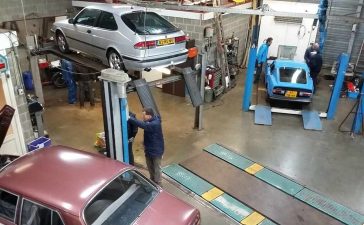
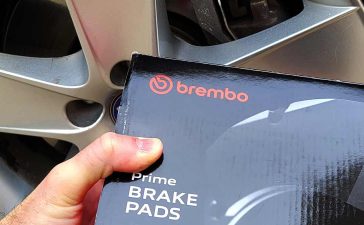

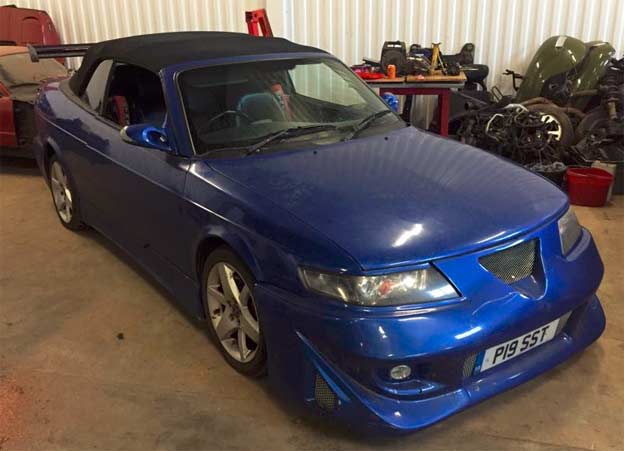

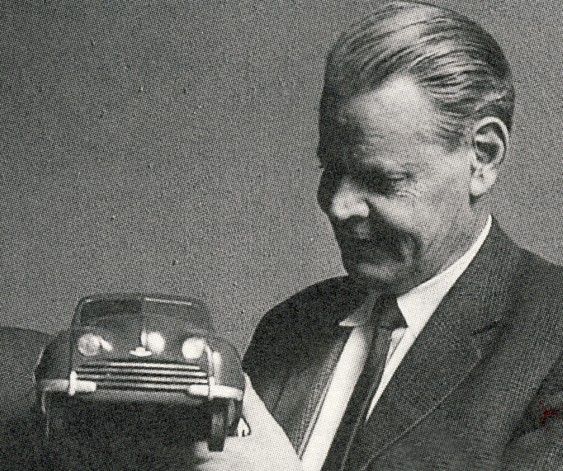


Why I can’t find this part with the number I have 17570-57L00
Good morning, Allow me to take advantage of your technical knowledge.
I am the only owner of a SAAB 9.5 2.3T 169KW 230HP Model Year 2001, purchased in September 2000.To date I have covered 140 thousand kilometers (87.000 mile) and, unfortunately, I have to replace the Engine Timing Chain due to noise when cold.I would like to purchase a complete replacement kit from a serious and reliable brand,I therefore kindly ask you give me your competent advice.
Sincerely, Gilberto Poggio – Italy